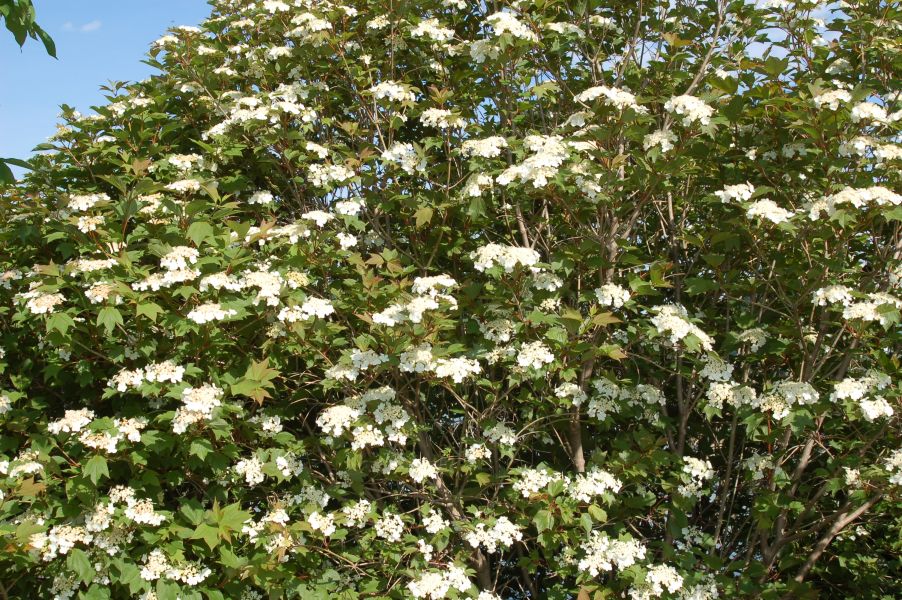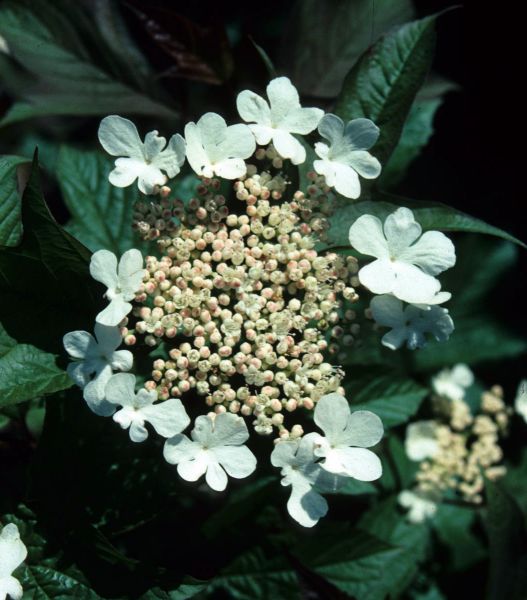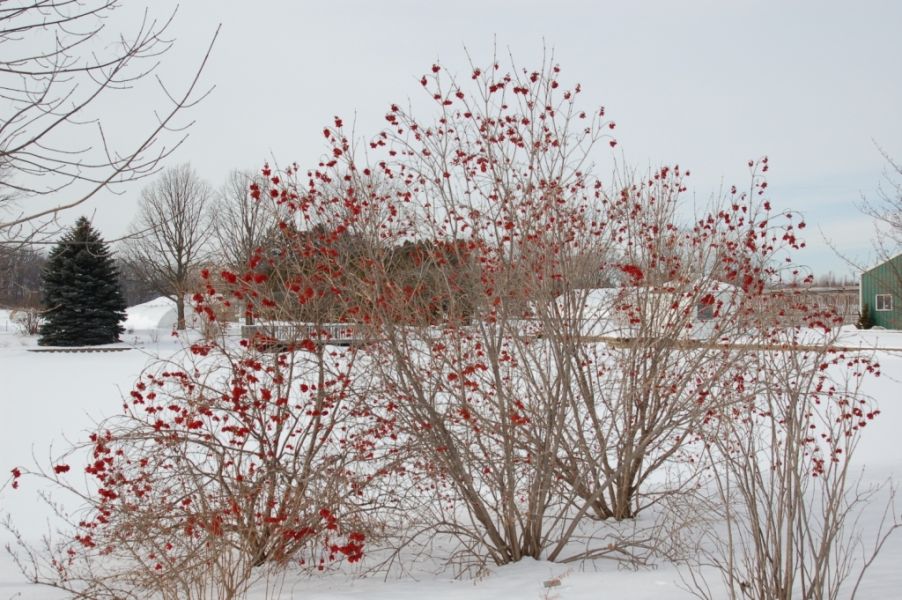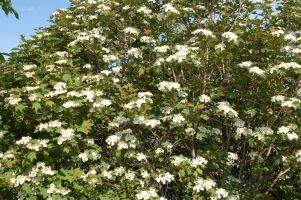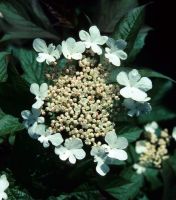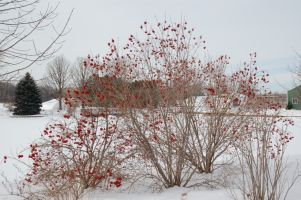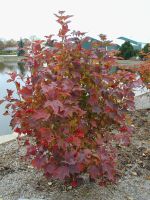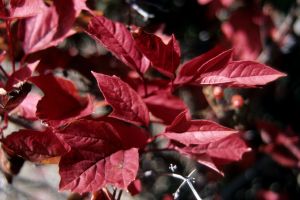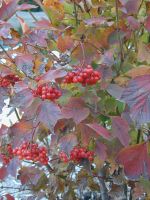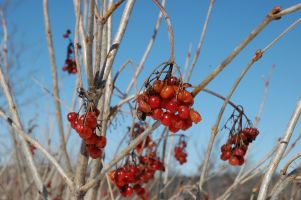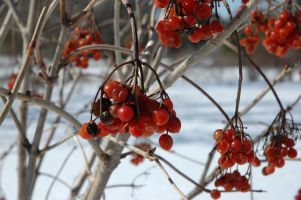Viburnum trilobum Redwing™
An improved selection with dense growth and lots of fruit.
An upright, oval deciduous flowering shrub selected for its uniform habit, deep red new growth and excellent red fall color. Redwing™ will produce large clusters of glossy red fruits when plants are cross-pollinated.
Redwing™ is a selection of an underused native shrub that performs very well in modern landscapes. This viburnum makes a wonderful screening plant with four seasons of interest and is an alternative to Viburnum opulus in areas where V. opulus has become invasive. Redwing TM has been verified by Dr. Edward R. Hasselkus from the University of Wisconsin, Madison, as a true V. trilobum, not a hybrid. Some other cultivars in the trade are believed to be hybrids between V. opulus and V. trilobum.
Ornamental Characteristics:
FOLIAGE Wine red new growth fades to bright medium green in summer.
FALL COLOR Brilliant cranberry red foliage
FRUIT Glossy red fruits in massive clusters adorn the plant throughout the fall and into winter for a wonderful show.
Who Am I?
-
Common Name:Redwing cranberry bush viburnum
-
Botanical Name:Viburnum trilobum 'J N Select'
-
Type:Shrub
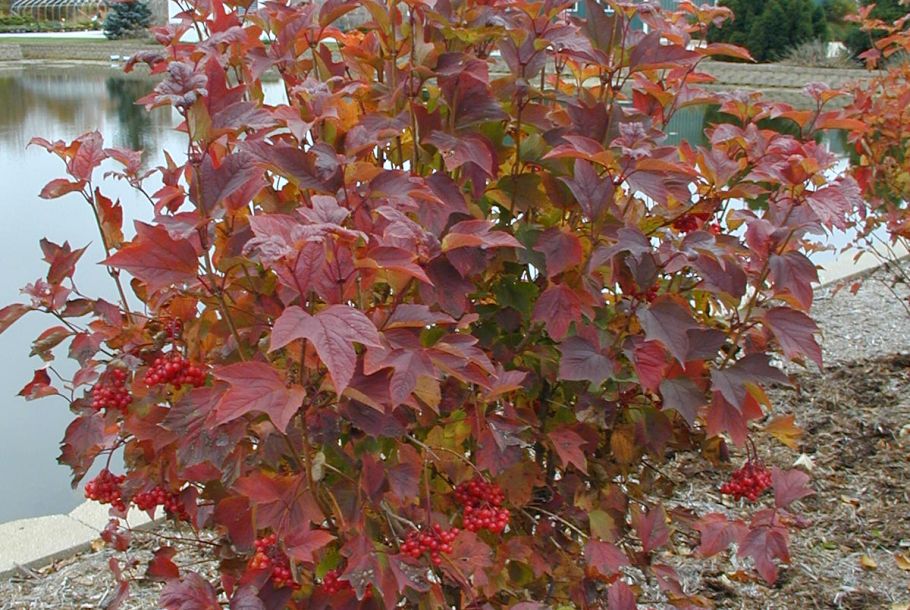
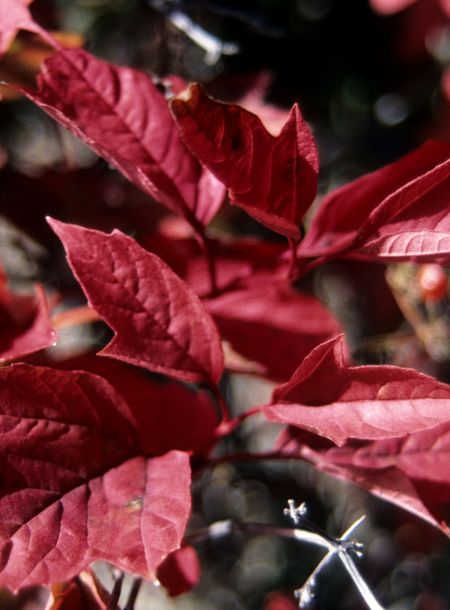
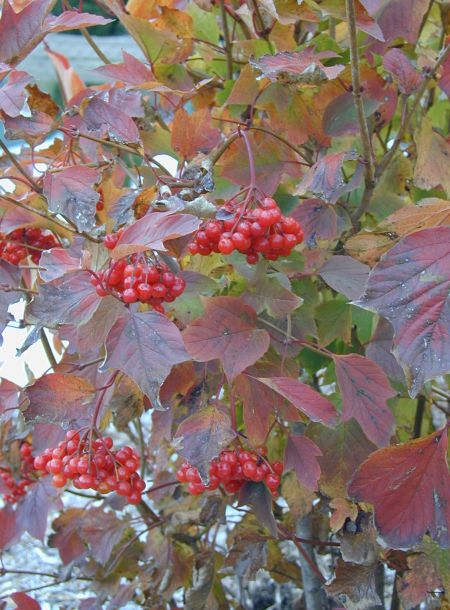
Cultural Details
TYPE
-
Light:Full sun to part shade
-
Soil:Average garden soil
-
Moisture:Moist, but well-drained.
-
Hardiness Zone2-7
-
Bloom Time:Spring
-
Bloom Color:White
-
Fruit TimeFall
-
Fruit ColorRed
-
Size:8-10' tall by 6-8' wide
-
Diseases & Pests:Viburnum borers can be a problem with stressed specimens
What Makes Me Special?
Landscape Use
Origin
Selected by Michael Yanny of Johnson's Nursery in Menomonee Falls, Wisconsin.
Pruning
Viburnums flower in spring, so if they need any shaping or to have dead branches removed, be sure to do that before August, or right after flowering in the spring. If you want to have viburnum fruits, do not prune. Branches you prune after flowering will not produce fruits.
